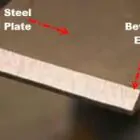TIG welding is used by many companies, from the food industry to the aerospace industry, where high-quality, even weld seams are needed. This process could be compared to a high-end limousine, which is very nice but not very fast. And this exact problem can quickly become a problem in production processes that use TIG welding technology: the TIG process can be inefficient due to its slow speed, especially for thicker materials that need multiple passes. Let us see what keyhole welding actually is.
But there is a solution: single-pass keyhole welding, which lets you make perfect weld seams and work quickly.
What is welding in a keyhole?
The keyhole welding method is based on an arc that has a lot of energy packed into it. It is different from TIG welding because the arc energy is focused on a small area instead of a large one. This makes the penetration deep and narrow.
For keyhole welding, you need metals that don’t transfer heat well.
If the parent material doesn’t conduct heat well, heat will build up in a small area. This is a requirement for the keyhole method. Most of the time, high-alloy or Duplex steels are used. On the other hand, the less a material is good for keyhole welding, the better it conducts heat.
If you want to use keyhole welding to join alloyed steels, you need to remember that the way different alloys conduct heat is very different from how pure metals behave. For example, nickel is a good conductor of heat. But when it’s part of a nickel-based alloy, it doesn’t let heat through well, so it’s perfect for keyhole welding.
Plasma Keyhole Welding
Plasma keyhole welding is often used to build chemical and stainless steel equipment, as well as tanks and pipelines. One common use is square butt welding on thick-walled pipes, tanks, and floors to make longitudinal and circumferential welds.
The thickness of the materials here ranges from 3 mm to 10 mm. Plasma keyhole welding is most often used for root welding on walls thicker than 10 mm.
How plasma welding works and what its benefits are.
Plasma welding is a method of welding in which plasma gas is used to narrow the arc. This makes a concentrated, almost cylinder-shaped arc that changes depending on the diameter of the plasma nozzle and how much plasma gas is used. The plasma jet is made up of a fast-moving stream of ionised gas that goes through a special plasma nozzle.
At the start of the seam, the high pressure of the plasma makes what is called a “keyhole,” which melts the parent material all the way through. This means that square butt joints can be used to join high-alloy chrome-nickel materials with walls up to 10 mm thick. Most of the time, a cold wire is used to fill in the keyhole and stop root sag. Up to eight millimetres of thickness can be welded in a single pass without any prep work.
Keyhole process for plasma:
When compared to TIG welding, plasma welding has many advantages in terms of quality, cost, and speed:
Avoid time-consuming work to prepare seams (pre-processing and chamfering of workpiece edges).
Fewer wires are needed because there is less space to fill (square butt joint instead of Y or U butt joint).
Less distortion of the parts because less energy was put in.
Reworking is less likely when there is less component distortion and less weld reinforcement.
TIG Keyhole Welding
Several different TIG-based keyhole welding processes have been put on the market by different companies over time. Most of them were made just for welding joints with machines. TIG keyhole welding is often used in the same situations as plasma keyhole welding, where the quality of the seam and how much it costs are both very important.
But TIG keyhole welding isn’t as good for joining things that have a surface, like galvanised sheet metal. Here, plasma keyhole welding is a good choice because the plasma nozzle protects the electrode and lets it last longer.
ArcTig does TIG keyhole welding at Fronius.
“ArcTig” is the name of Fronius’s keyhole welding method that uses TIG. The most important differences between this method and plasma keyhole welding are: Instead of using plasma gas to concentrate the arc, the ArcTig method uses high-performance cooling over a wide area. This has allowed Fronius to lower the temperatures at the tungsten electrode up to the needle tip. This makes an arc that is very focused and, as a result, effective. Even here, the energy density is high, and the process is also used to weld in a single pass. Also, there is no need for pre-processing, and the process can be used on materials with a sheet thickness of up to 10 mm.
ArcTig is also a good way to work with a wide range of other materials. Because there is no plasma power source and plasma gas, there are fewer things to think about. This saves time and makes it easier to weld. And since neither a power source for plasma nor plasma gas is needed, this saves a lot of money.





